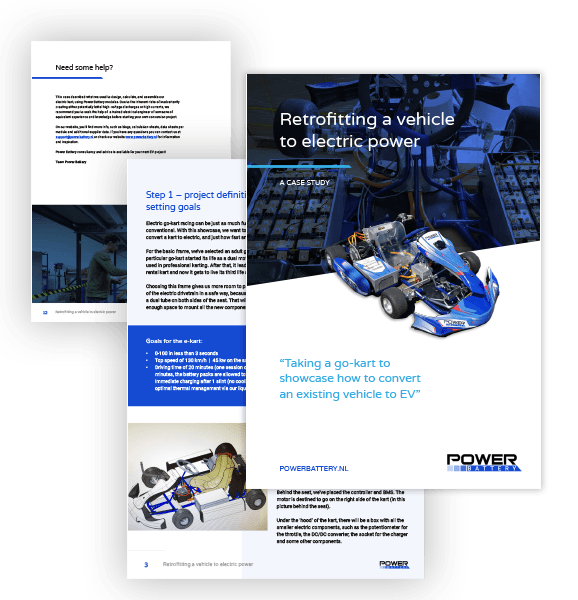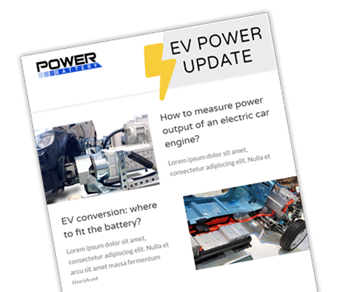Retrofitting for electric vehicles: 11 tips to save time and money
Retrofitting your fuel powered vehicle into an electric vehicle can be an expensive and time-consuming project. We have collected 11 practical tips to save you some time and money -and maybe more important- a lot of headache.
1. Use EV conversion forums
Search on the forums how other people fared when converting their vehicles. Maybe there is already someone out there who converted the same vehicle to electric that you’re planning to convert. This will help you avoid making a lot of mistakes since someone else already made them for you. Some examples are:
- DIY Electric car: https://www.diyelectriccar.com/
- Endless Sphere: https://endless-sphere.com/forums/
- Also on YouTube there are a lot of helpful EV conversions videos: www.youtube.com
2. Research the drivetrain components
Make sure you take the time to do extensive research on which drivetrain components are available on the market. Contact EV conversion companies and ask their experiences with EV conversion and the components you’re planning to use. This will take some extra time before starting the project, but you will save a lot of time and money when you know in advance which components you want to use. And above all, make sure you select components that are very user friendly and easy to install! It will save you a lot of headaches when you get to the building phase.
3. Picking the right mounting brackets
Once you have chosen your motor, search for available mounting brackets. There are a lot of companies that produce mounting brackets for electric motors. Some even have brackets that make it possible to mount the motor to the gearbox or differential of the original vehicle. This will save you a lot of time making your own brackets.
4. Design the battery pack to match the vehicle
Try to design the battery pack in a way that you do not have to modify your vehicle too much. Also make sure the battery pack will be easy to place in the application. The voltage determines the batteries connected in series. To reach the required capacity, one or more strings of batteries need to be added in parallel. This will be the minimum space of your battery pack. Consider that the battery pack(s) also need(s) a housing, connectors, BMS, contactors and more.
5. Placement of the controller
Place the controller as close to the motor as possible. Long power leads cause a lot of unwanted electromagnetic radiation. This will cause nearby electric components to malfunction. For the electric kart we used power leads with a length of 30cm each. You don’t want these to be longer than that. Most of the time power leads are already connected to the motor and have a certain length. Don’t extend these.
6. Building a battery pack yourself or outsourcing it?
Decide if you want to build your own battery pack or want to hire a company to do it for you. If you do not have experience with battery packs, we recommend outsourcing it. Anyone who designs and builds a battery pack needs to have the engineering knowledge and skills to do such.
7. Matching motor and controller
Try to source the motor and motor controller from the same company. They can often configure the motor to the motor controller, so it will work right away. Otherwise, it will cost you a lot of time configuring this combination.
8. Keep the system as simple as possible
Try not to add too much external systems to your vehicle. We know it is nice to have a dashboard with an interactive display and some other fancy features, but it will complicate your build. Try to keep it as simple as possible. It is already a lot of work to do an EV conversion.
9. Reuse original components
Keep as many components of the original drivetrain as possible. Everything you can use of the old drivetrain (such as the suspension, driveshafts, etc.) is an item you do not have to buy or modify. Keep in mind that the old drivetrain was designed for the power that the vehicle originally had. If you add more power, you will need to upgrade all those components. If you want to save money, choose a motor that has the same power output as the old engine.
10. Weight distribution
Do not change the weight distribution too much. Place all your new components in the space where the old components used to be. For example, in terms of weight it is advised to place the battery pack in the spot where the motor used to be. Otherwise, your vehicle will not be as easy to operate as it used to be, and you will lose time and money in compensating for that.
11. Test the drivetrain
Test the drivetrain before you install it in the application. If you find out the drivetrain doesn’t work after everything is placed in position and connected, it is very regrettable if everything needs to be disassembled again. At Power Battery we have a power meter that can test the drivetrain for you. By testing your drivetrain before final assembly, you’re certain your drivetrain will work once you install it.
Custom advice for your EV project
In short, converting a vehicle to an EV can be quite a challenge. At Power Battery we develop, test and produce battery packs and modules. Please contact us if you have any questions regarding your project, or request consultation.


